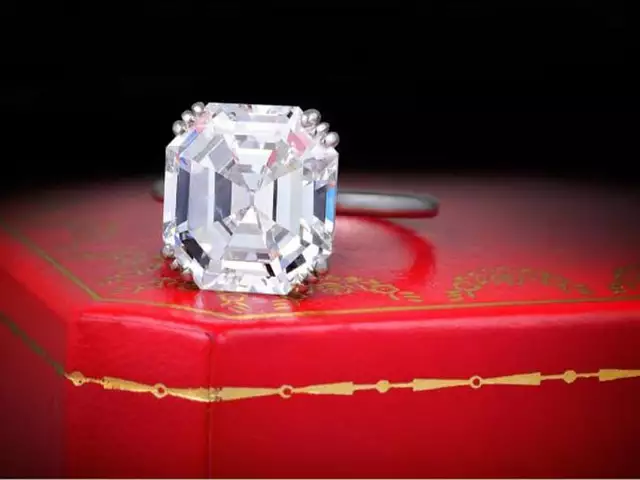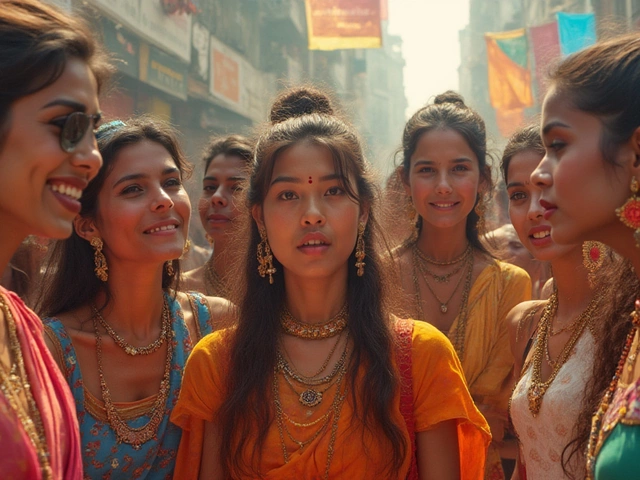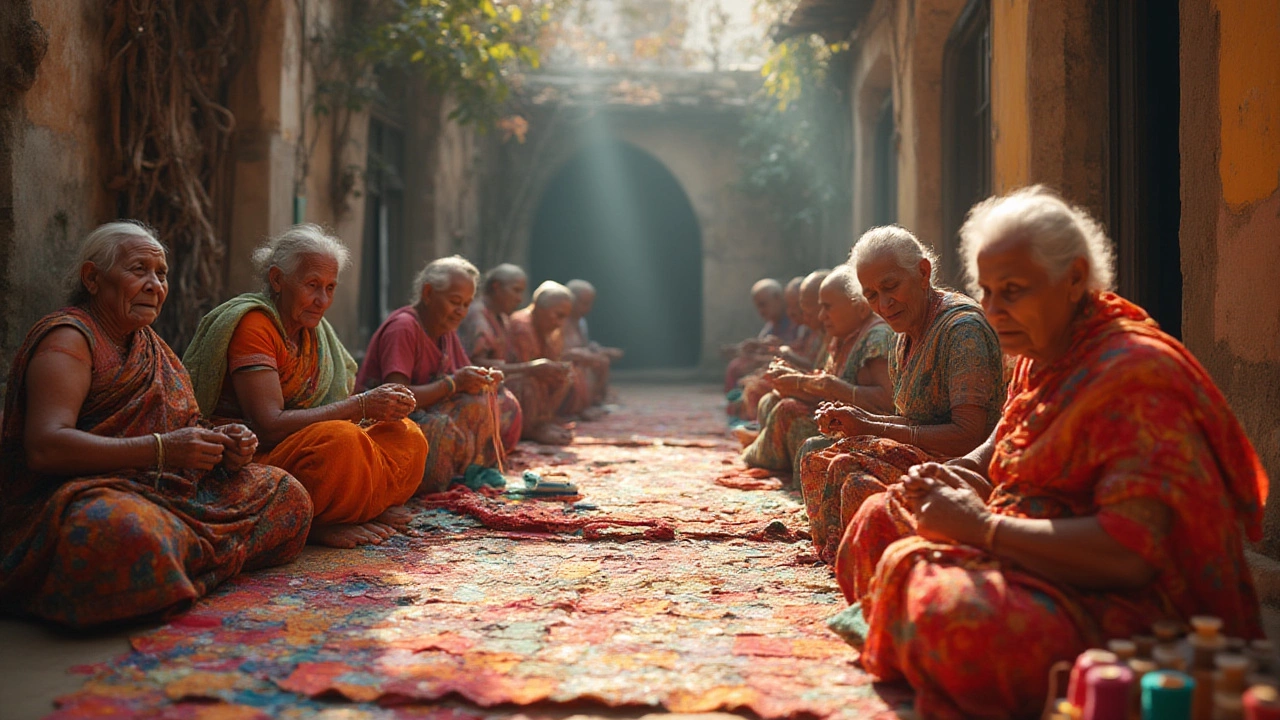
Ever noticed how two cultures can have something that looks similar on the surface, but dig a little deeper and you’ll find worlds of difference? Kantha and sashiko are perfect examples. People often confuse them because both use repetitive stitching and simple needlework to revive old fabrics. But honestly, they're from completely different worlds, each with its own story, rules, and even vibe. If you've ever wondered why kantha quilts feel so lively, or what gives sashiko its clean, almost mathematical look, there's a reason—one rooted in centuries-old traditions, everyday life, and those little moments that changed how people stitched, saved, and decorated cloth.
The Origins: Centuries, Continents, and Why They Started Stitching
If you love a good origin story, both kantha and sashiko have plenty of twists. Let’s start with kantha. It's a household name in Bengal (Eastern India and Bangladesh), tied to stories of grandmothers reusing old saris for decades. The technique goes back at least 500 years, with some of the oldest surviving examples dating from the 19th century. Why did it start? Necessity. In villages where nothing went to waste, women layered worn-out cloth from saris, dhotis, or lungis, and stitched them together using simple running stitches. This turned scraps into something beautiful, durable, and personal—often filled with little embroidered stories: a child, a wedding, a memory. Kantha isn’t just a decorative art; it’s a testament to frugality and creativity.
Sashiko, meanwhile, hails from Japan, mostly Northeast regions like Tohoku. The word means “little stabs” or “little pierce.” Sashiko first popped up on the Japanese radar during the Edo period (17th to 19th centuries). While kantha was all about making precious personal items, sashiko was born from tough times—when farmers and fishermen, unable to afford new clothes, layered up old hemp or cotton, then strengthened the fabric by sewing geometric patterns of tiny, even stitches. At first, it was strictly utilitarian: a way to reinforce, patch, or quilt old garments to survive harsh winters. But over time, sashiko patterns got more complex and even began serving as subtle class indicators.
Isn’t it wild that, half a world apart, people used nearly the same solution for different problems? Yet, despite surface similarities—reusing textiles, running stitches—their histories, context, and even the way they tell their stories are totally different.
Techniques and Materials: More Than Just Running Stitches
Ever wondered why kantha quilts can look so artful and spontaneous, while sashiko pieces seem almost mathematical? The answer is in the technique and materials. Traditional kantha uses layers—usually old saris or dhotis folded together—stitched down with a fine running stitch called the ‘kantha stitch.’ The thread is often cotton, pulled straight from leftover sari yarn, so the colors and thickness might change within the same quilt. Kantha is wonderfully freeform. No two pieces are identical. You’ll see curves, doodles, animals, folk scenes, maybe even clever little borders. Kantha allows for artistic expression. Sometimes the entire surface is covered, sometimes just a few lines. That’s why you might find kanthas with visible motifs and uneven stitches—they’re meant to be a visual diary as much as a functional blanket.
Sashiko takes a different approach. It’s all about precision. Fabric is usually indigo-dyed cotton or hemp, and the thread is thicker, often white—for maximum contrast. Sashiko patterns are geometric: think interlocking circles, repeated waves, or grids. The stitches are small, evenly spaced, and usually don’t cross. There are even rules about stitch length! A sashiko crafter might mark a grid with chalk first, then execute the design with incredible discipline. This attention to regularity comes from its roots as a strengthening technique: perfectly-spaced stitches made the cloth stronger. While modern sashiko can showcase more creativity, the focus on repetition and order is still king. You’d struggle to find a sashiko with animals or freehand motifs—its beauty lies in pattern and precision.
Want to spot the difference at a glance? Kantha pieces feel breezy—sometimes a little unruly—telling personal stories. Sashiko might look like a blueprint come to life, balanced and almost meditative. Both methods work on layered old cloth, but the flavor, tools, and even the 'rules' are world’s apart.
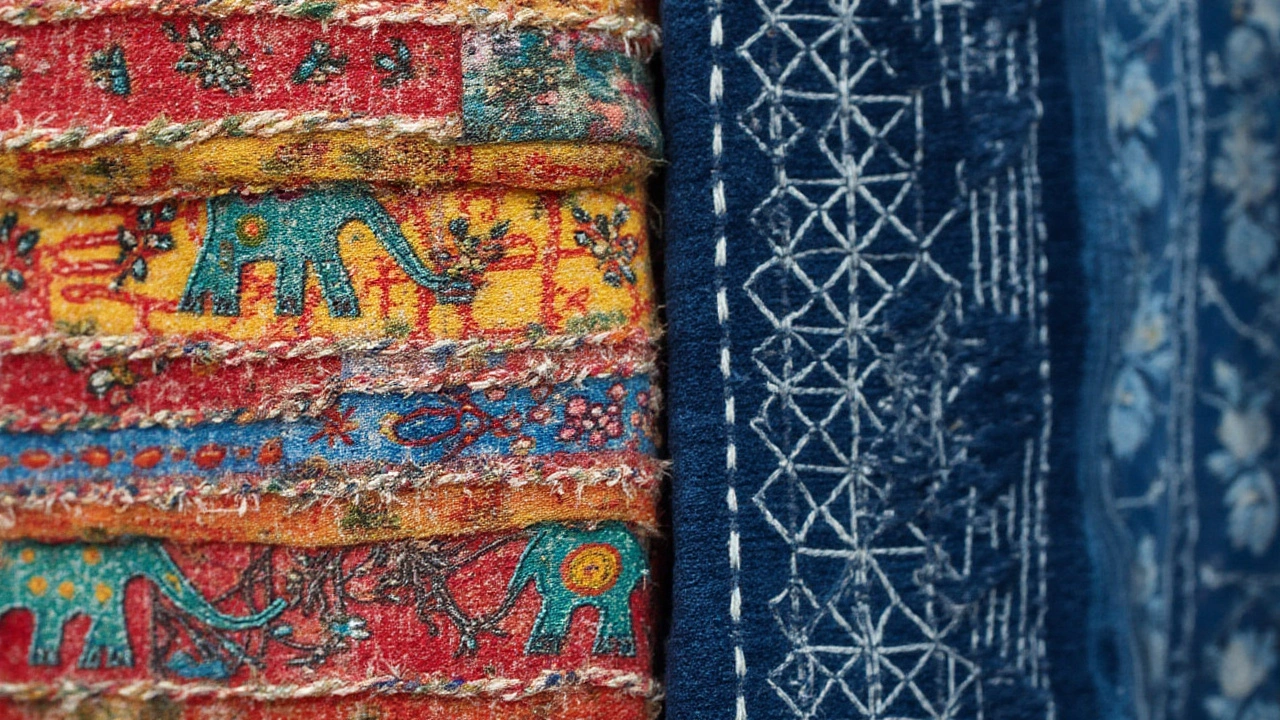
Symbols, Patterns, and Meanings—Not Just Needlework
What you see in kantha often isn’t just decoration, it’s storytelling. Kantha motifs jump straight from the maker’s life: lotus flowers, elephants, peacocks, trees of life, household scenes—sometimes even airplanes or modern icons sneak in. Each stitch was a chance to remember, dream, or bless the recipient. For example, a bride’s kantha throw might show scenes of marriage, prosperity, or fertility, while children’s kanthas often brim with protective symbols. Even basic kantha pillows and blankets have a kind of homey, personalized language, unique to a family or even a single artisan. Densely stitched kantha can feel almost sculptural, with lines rising and falling across the surface like emotional brushstrokes.
Sashiko is less about overt storytelling, more about connection and continuity. Geometric patterns have deep meanings, but these are expressed through repetition. For example, “asanoha” is a hemp-leaf design believed to offer protection, or “seigaiha” waves symbolize good luck and resilience. Some families had signature patterns for generations—almost like a crest—and you’ll still see sashiko designs echoing in modern Japanese textiles. Sashiko stitches were seen to bind, protect, and fortify—not just cloth, but the family as well. Linen from grandma’s apron might be incorporated in a winter jacket, layered with memories and utility. These days, sashiko is used for beauty as much as strength—but those underlying values, of durability, thrift, and attention to ritual, remain stitched into every piece.
From Village Quilt to the Runway: Kantha, Sashiko, and Modern Fashion
If you think kantha and sashiko are museum relics, think again. Fashion labels on both sides of the world have been raiding these traditions for inspiration. Kantha patchwork jackets, bags, and even sneakers are big sellers from Kolkata to New York. If you visit a craft fair in India, you’ll see kantha not only on throws but reimagined as scarves, stoles, kidswear, and even wall hangings. Designers like Sabyasachi or international labels (hello, Anthropologie) have put kantha embroidery center-stage, often using repurposed vintage saris to make one-of-a-kind statement jackets and gowns. Why does it work? Kantha’s energy—its bold, irregular stitch lines and colorful charm—pairs perfectly with the slow-fashion movement, which craves authenticity and recycled materials. Each piece feels unique, a little slice of artistic tradition.
Sashiko has surfed the same wave, but with a different look. It's everywhere from minimalist homeware brands (think Muji) to edgy streetwear—often as patches on jeans or statement embroidery on jackets. Denim brands, especially in Japan and now the US, have picked up the sashiko style because it’s the ultimate in cool, visible mending. Boro jeans (made using sashiko techniques) go for hundreds of dollars. Crafters love sashiko because you don’t need a ton of tools: a needle, thread, a thimble, and some patience. That geometric discipline, when splashed on modern shapes, really pops—in everything from throw pillows to capsule jackets.
You can even see both techniques blending in workshops and studios worldwide. Hybrid “kantha-sashiko” crafts borrow motifs and methods, mixing Indian freedom with Japanese precision. The result? A global conversation in stitches—one that honors thrift while fueling a whole new creative movement.
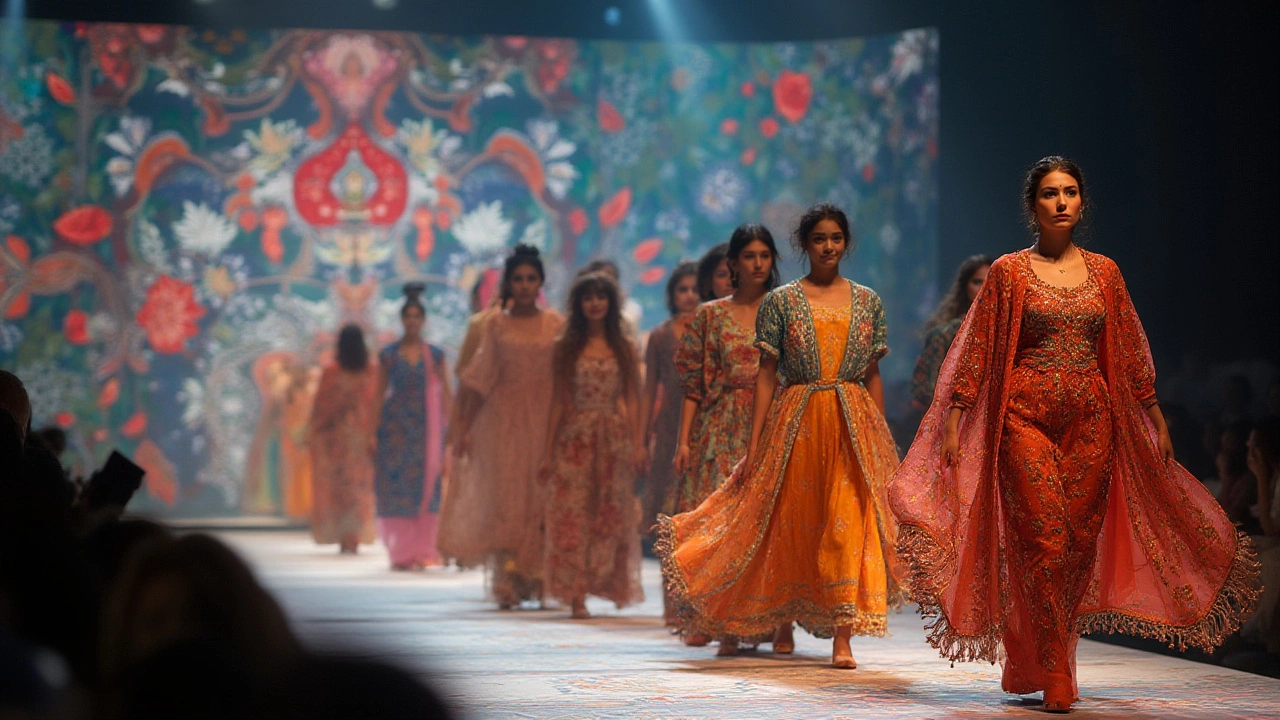
Tips, Care, and How to Start Stitching Yourself
Fancy trying your hand at either kantha or sashiko? Here’s the thing—you don’t need to be born in Bengal or Aomori to start. Grab some old cotton fabric for kantha and layer it (three to five layers works well). Use different colored threads, and don’t worry if your stitches aren’t even—the charm is in their unpredictability. If you want to tell a story, sketch a simple motif—a bird, a tree, maybe a pattern from your own home—and just run with it. Remember, kantha is all about layering meaning, not about perfection.
Sashiko, though, rewards a slightly different temperament. Get some indigo or dark blue fabric, a thick white cotton thread, and a long, sharp needle. Many crafters draw the pattern onto their cloth with tailor’s chalk—straight lines, circles, or repeating motifs. There are loads of free sashiko patterns online to start with. Go slow, keep your stitches even (imagine a musical rhythm, not a sprint), and see what happens. Over time, you’ll find some patterns protect parts of the garment that get the most wear—the mark of a truly thoughtful craft.
Want to keep your handmade or vintage kantha/sashiko looking great? Hand-wash in cold water and avoid harsh soaps. Hang them to dry, away from direct sunlight, to prevent color fading. Kantha can sometimes have loose threads—just tuck them in gently, or enjoy them as evidence of its handcrafted past. Sashiko’s sturdy stitches rarely pop, but if they do, just patch them with a matching thread using the same pattern. Thanks to both traditions being born from making-do, they’re super forgiving—mistakes become character.
If you are curious about the scale of global appreciation, here’s a snapshot of the popularity of kantha and sashiko crafts in fashion and home accessories (based on search trends in 2024):
| Technique | Top Export Country | Average Price (USD) | Annual Social Media Posts (#) |
|---|---|---|---|
| Kantha | India | $50-180 (quilt) | 320,000+ |
| Sashiko | Japan | $70-250 (jacket/patch) | 180,000+ |
Not bad for an art form that started with leftovers and a need to keep warm. Whether you wear, gift, or stitch them, kantha and sashiko are more than trends—they’re links to history, family, and the pure joy of turning ‘waste’ into something worth showing off.
